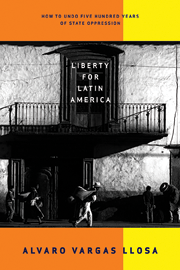The Trump administration’s decision to end Temporary Protected Status for natural-disaster refugees from El Salvador, first granted in the wake of two devastating earthquakes in 2001 and routinely extended since then, is a perfect example of what is wrong with U.S. immigration policy.
It comes at a time when everybody is talking about immigration. The Democrats are demanding action on DACA, the Deferred Action for Childhood Arrivals program initiated by President Obama. President Trump says he’s okay with DACA, so long as Congress funds his border wall and agrees to end “chain migration” and lottery visas. The Senate’s “Gang of Eight” continues to push for comprehensive reform.
Meanwhile, the 200,000 Salvadoran refugees who were granted U.S. Temporary Protected Status—some of whom have been living in the U.S. for nearly a generation—are being thrown under the bus.
The federal government is stumbling over a problem of its own creation, having made it almost impossible for the Salvadorans who lawfully have lived, worked, paid taxes and raised children under TPS to acquire permanent status. The absence of meaningful immigration reform and the resulting inability to provide a path toward permanent residence for such immigrants has meant that this temporary humanitarian program has had to be renewed so often that it has become permanent “de facto” but not “de jure.”
The absurdity of the situation is now apparent with the decision to expel the Salvadorans, who in most cases by now have stronger connections with the United States than with their country of origin, where—despite post-earthquake reconstruction—economic and social problems, especially gang-related violence, continue to make everyday life unsafe.
President Trump didn’t create the TSP-limbo problem. But he has decided to put an end to the absurdity in the worst possible way: without even beginning to address the larger issue of undocumented immigration.
Fewer than 200,000 Salvadorans, and less than 300,000 people in all if we count other nationalities, currently reside in the United States under the TPS program, a tiny percentage of the nearly 44 million immigrants currently living in the United States. In what way does targeting these people even begin to address the issue of undocumented immigration?
The administration knows, or should know, that its decision will devastate many lives. It’s chosen to pick on an immigrant group that fits many people’s idea of undesirable immigration: poorly educated, low-skilled foreigners. President Trump is aware that even Americans who are not ill-disposed towards immigration are inclined, after years of being told that only high-skilled, technologically sophisticated immigrants contribute to the country, to see low-skilled foreigners as a burden, rather than a resource.
Many studies have shown this to be false. Low-skilled immigrants free up native workers to do other types of jobs and eventually contribute to the economy both as producers and consumers.
Some two million Salvadorans currently live in the United States, half of whom were born here. According to the Migration Policy Institute, Salvadorans have the lowest educational achievement after Mexicans—less than 48 percent have high school diplomas and only 8 percent a bachelor’s degree. And, yes, many of them work, mostly in California, Texas, New York and the Washington, D.C., area, in jobs requiring little education.
Those who hold temporary protected status are part of that community and work primarily in the construction, landscaping and restaurant industries. The demand for their labor is strong. Workforce participation among Salvadorans who are here under TPS is 88 percent, 25 points above the rate of the general U.S. population.
The combination of low educational attainment and strong work ethic is an enduring theme in the story of U.S. immigration history. The Salvadoran community is following the same assimilation cycle followed by other immigrant groups since the nineteenth century. That’s why, for instance, the children of Salvadoran immigrants complete high school at a rate five times higher than their parents.
In a book on immigration that I wrote some years ago, I offered statistics showing that there is little difference between the way Italians and other immigrant groups rose through the ranks in the United States and the way Latin American immigrants are doing so today. The assimilation cycle takes place over three generations, and that includes Salvadorans.
The plight of the Salvadorans who have been working and raising their children here for two decades under a periodically renewed TPS—a consequence of the failure to pass immigration reform and create a legal mechanism for immigrants to come out of the shadows permanently—is further proof that U.S. immigration policy is absurdly contradictory, lacks a comprehensive view of how the moving parts of the economy fit together, and shows little historical awareness of how immigrant groups assimilate and help make the United States the dynamic economic and cultural powerhouse it is today. America is better than this.













